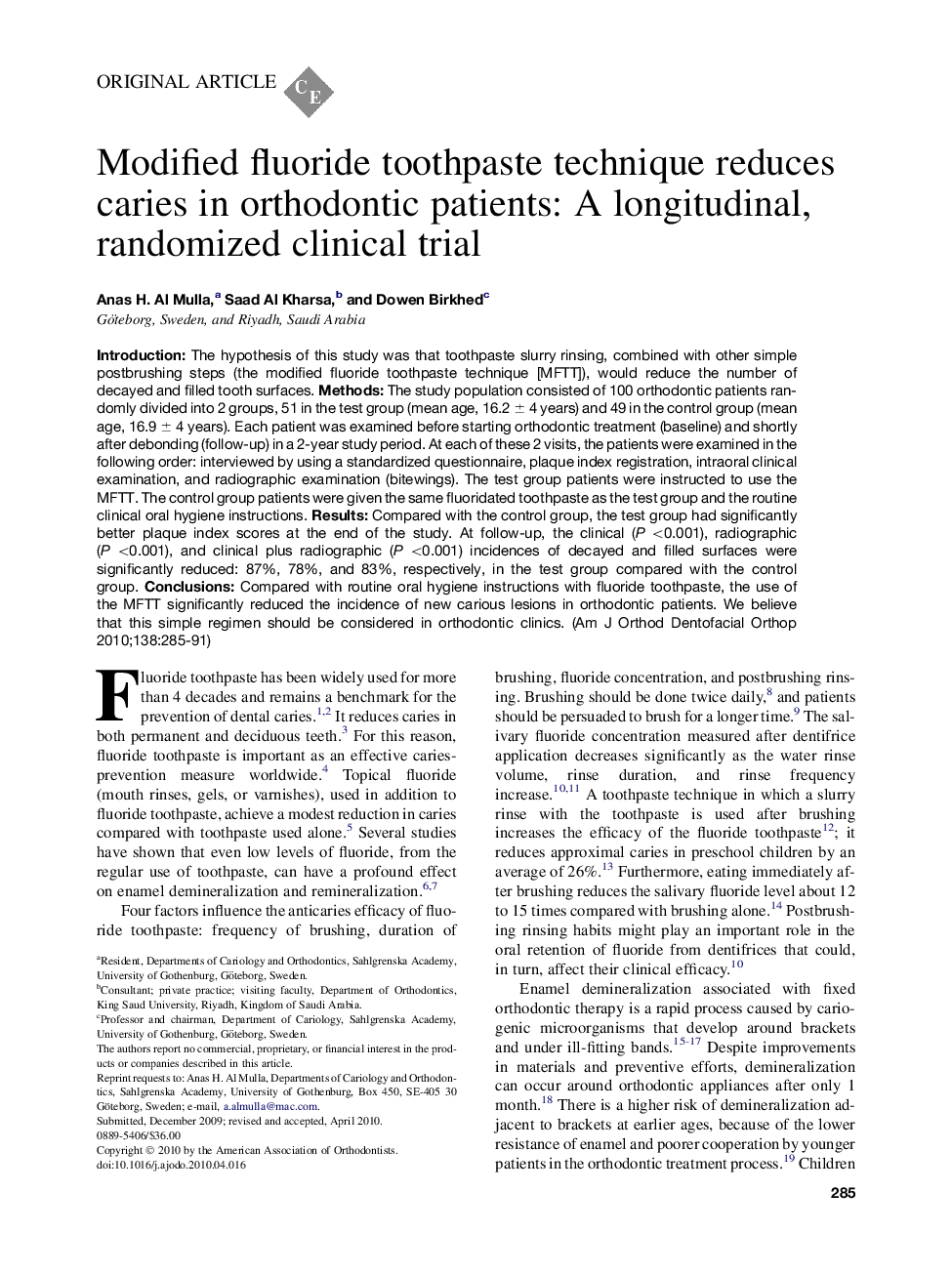| Article ID | Journal | Published Year | Pages | File Type |
|---|---|---|---|---|
| 3117566 | American Journal of Orthodontics and Dentofacial Orthopedics | 2010 | 7 Pages |
IntroductionThe hypothesis of this study was that toothpaste slurry rinsing, combined with other simple postbrushing steps (the modified fluoride toothpaste technique [MFTT]), would reduce the number of decayed and filled tooth surfaces.MethodsThe study population consisted of 100 orthodontic patients randomly divided into 2 groups, 51 in the test group (mean age, 16.2 ± 4 years) and 49 in the control group (mean age, 16.9 ± 4 years). Each patient was examined before starting orthodontic treatment (baseline) and shortly after debonding (follow-up) in a 2-year study period. At each of these 2 visits, the patients were examined in the following order: interviewed by using a standardized questionnaire, plaque index registration, intraoral clinical examination, and radiographic examination (bitewings). The test group patients were instructed to use the MFTT. The control group patients were given the same fluoridated toothpaste as the test group and the routine clinical oral hygiene instructions.ResultsCompared with the control group, the test group had significantly better plaque index scores at the end of the study. At follow-up, the clinical (P <0.001), radiographic (P <0.001), and clinical plus radiographic (P <0.001) incidences of decayed and filled surfaces were significantly reduced: 87%, 78%, and 83%, respectively, in the test group compared with the control group.ConclusionsCompared with routine oral hygiene instructions with fluoride toothpaste, the use of the MFTT significantly reduced the incidence of new carious lesions in orthodontic patients. We believe that this simple regimen should be considered in orthodontic clinics.
